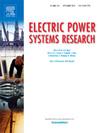基于SHapley加性解释的可解释短期电力负荷预测模型——以北京市海淀区为例
IF 3.3
3区 工程技术
Q2 ENGINEERING, ELECTRICAL & ELECTRONIC
引用次数: 0
摘要
近年来,随着现代社会的快速发展,对电力的需求日益旺盛。准确预测电力峰值负荷对维持电力供应稳定至关重要。本研究采用统计(逐步多元线性回归,SMLR)和机器学习(极端梯度增强,XGBoost,最小绝对收缩和选择算子-极端梯度增强,LASSO-XGBoost)算法在两种场景下建立了海淀区每日电力峰值负荷预测模型。并通过SHapley加性解释(SHAP)和部分依赖关系(PDR)分析,对最优模型的可解释性进行了分析,以量化关键特征对日用电峰值负荷的贡献。结果表明,与SMLR模型相比,XGBoost和LASSO-XGBoost的预测精度更高(R2>0.93)。气象因素、过往用电高峰负荷和节假日参数是峰负荷预测的关键特征:海淀区峰值负荷受“周末效应”影响显著,节假日峰值负荷明显低于工作日。感温是影响峰值负荷的最关键气象因子,当感温超过29.5℃时,感温迅速增加。电力负荷表现出短期的时间依赖性,以往的峰值负荷也是影响预测结果的重要因素。我们的研究结果为电力行业制定电力生产和调度策略提供了宝贵的见解。本文章由计算机程序翻译,如有差异,请以英文原文为准。
An interpretable short-term electrical load forecasting model based on SHapley Additive exPlanations——A case study in Haidian, Beijing
In recent years, with the rapid development of modern society, the demand for electric power is booming. Accurate forecasting of electrical peak load is crucial for maintaining a stable electricity supply. This study developed daily electrical peak load forecasting models for Haidian by statistical (Stepwise Multiple Linear Regression, SMLR) and machine learning (Extreme Gradient Boosting, XGBoost, and Least Absolute Shrinkage and Selection Operator-Extreme Gradient Boosting, LASSO-XGBoost) algorithms under two scenarios, and conducted an interpretability analysis on the optimal models to quantify the contributions of the critical features for daily electrical peak load through SHapley Additive exPlanations (SHAP) and Partial Dependence Relationship (PDR) analysis. The results showed that XGBoost and LASSO-XGBoost achieved superior predictive accuracy (R2>0.93), compared with SMLR model. Meteorological factors, past electricity peak load, and holiday parameter were critical features for peak load forecast: Peak load in Haidian was significantly influenced by the "weekend effect", which was notably lower on holidays compared to workdays. Sensible temperature was the most critical meteorological factor for peak load, which increased rapidly when it exceeded 29.5°C. Electricity load exhibited short-term temporal dependence, and previous peak loads were also important contributors to the prediction result. Our results provided valuable insights for the electricity sector in formulating strategies for electricity production and dispatching.
求助全文
通过发布文献求助,成功后即可免费获取论文全文。
去求助
来源期刊

Electric Power Systems Research
工程技术-工程:电子与电气
CiteScore
7.50
自引率
17.90%
发文量
963
审稿时长
3.8 months
期刊介绍:
Electric Power Systems Research is an international medium for the publication of original papers concerned with the generation, transmission, distribution and utilization of electrical energy. The journal aims at presenting important results of work in this field, whether in the form of applied research, development of new procedures or components, orginal application of existing knowledge or new designapproaches. The scope of Electric Power Systems Research is broad, encompassing all aspects of electric power systems. The following list of topics is not intended to be exhaustive, but rather to indicate topics that fall within the journal purview.
• Generation techniques ranging from advances in conventional electromechanical methods, through nuclear power generation, to renewable energy generation.
• Transmission, spanning the broad area from UHV (ac and dc) to network operation and protection, line routing and design.
• Substation work: equipment design, protection and control systems.
• Distribution techniques, equipment development, and smart grids.
• The utilization area from energy efficiency to distributed load levelling techniques.
• Systems studies including control techniques, planning, optimization methods, stability, security assessment and insulation coordination.
 求助内容:
求助内容: 应助结果提醒方式:
应助结果提醒方式:


